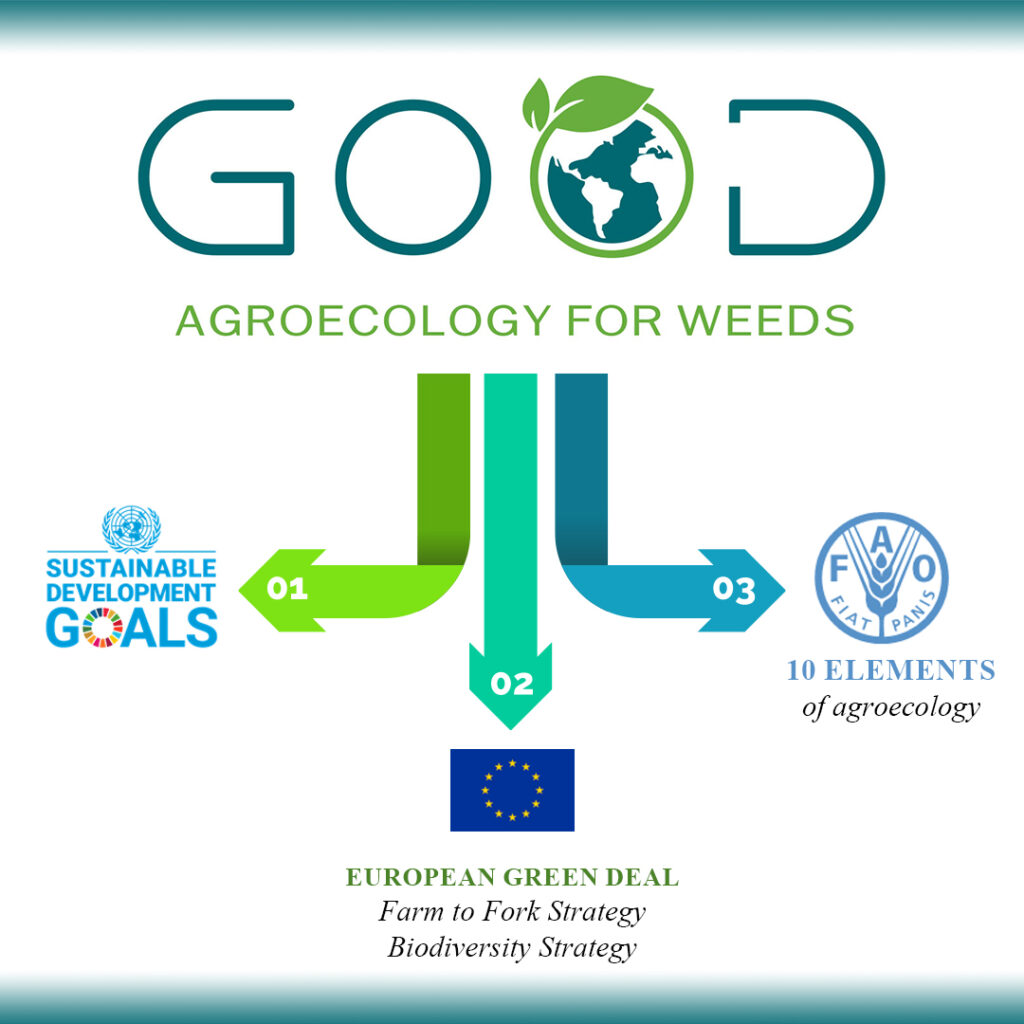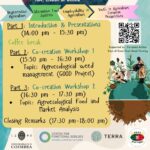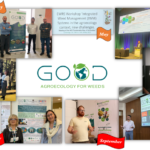Weeds are considered one of the most important factors to determine the productivity, profitability, and sustainability of farms. Farmers depend heavily on herbicides due to their high efficacy against weeds and they constitute the second most-widely sold category of pesticides in the EU-27. However, herbicides have a high impact on the health of the ecosystems, decreasing biodiversity, causing depletion of soils, increasing environmental pollution, and being potentially hazardous to human health.
By implementing a multidisciplinary approach, GOOD aspires to create, implement and assess Agroecological Weed Management (AWM) practices, systems and protocols, and to demonstrate, under real farm conditions, how the adoption of agroecological weed management can strongly reduce the use of synthetic herbicides, enhance sustainability, productivity, and resilience of cropping systems.
What is, though, agroecological weed management?
We consider AWM as a set of environmentally, human and animal-friendly practices consisting of preventive or curative means for breaking the development cycles of weeds, and thus preventing their harmfulness to the main crop. These means rely on natural regulatory mechanisms between plant species, among each other, or with the soil microbiome, or even by inducing a temporal shift in weeds emergence. Other alternative methods (mechanical, physical, digital, biocontrol) can also be combined with these natural levers, which, alone, are likely to be only partially effective.
Recognizing the need to accelerate the transition to sustainable, safe, and healthy food systems and tackle the threat of the biodiversity crisis, various EU policy initiatives, including the EU Green Deal and its Farm to Fork (F2F) and Biodiversity Strategies, have set the target to reduce by 50% the use of synthetic pesticides by 2030. These EU policy initiatives will be transposed into the Common Agriculture Policy (CAP) Member-States Strategic Plans through the eco-schemes. GOOD contributes to the implementation of EU targets, Sustainable Development Goals of the United Nations and 10 elements of agroecology of Food and Agriculture Organization (FAO).



